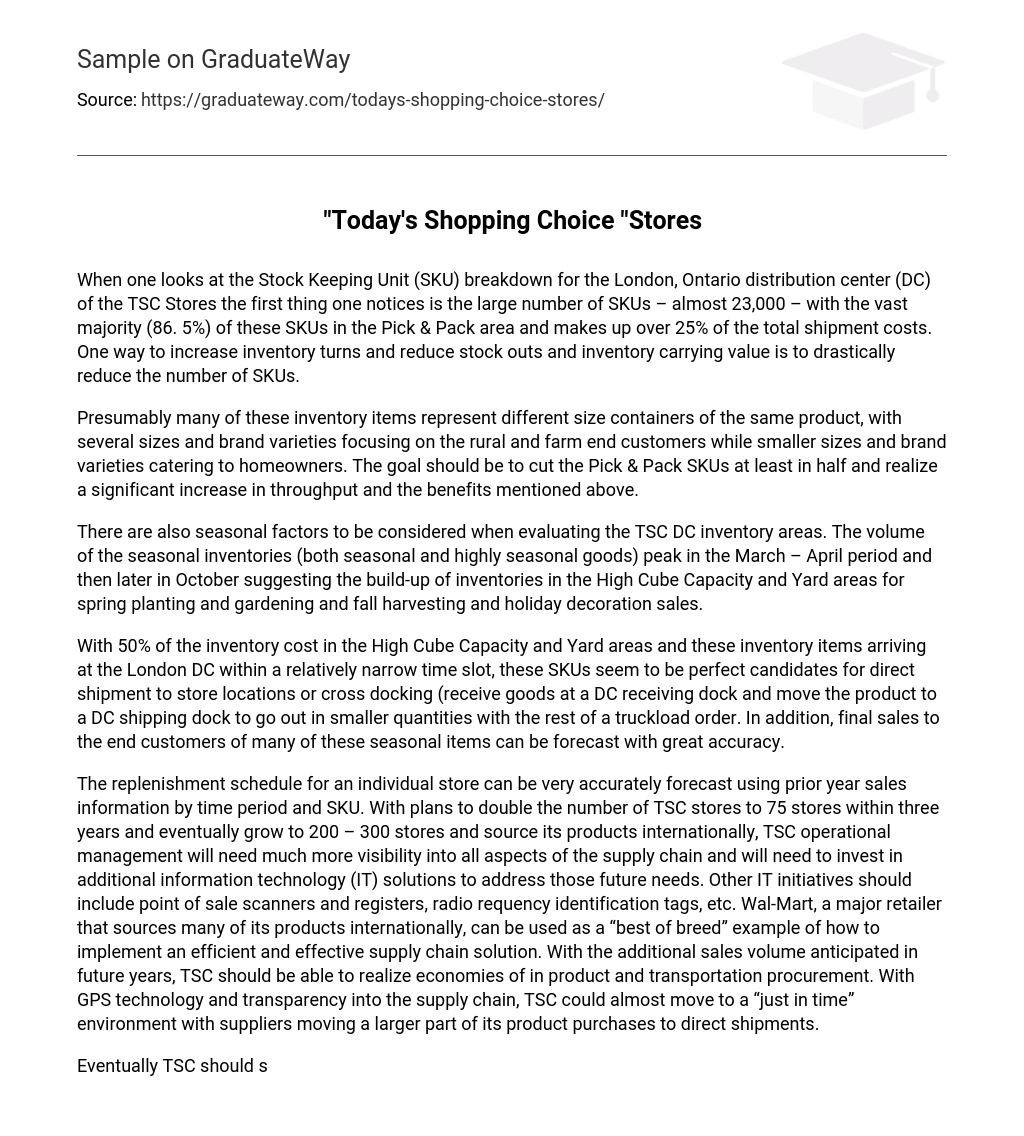When one looks at the Stock Keeping Unit (SKU) breakdown for the London, Ontario distribution center (DC) of the TSC Stores the first thing one notices is the large number of SKUs – almost 23,000 – with the vast majority (86. 5%) of these SKUs in the Pick & Pack area and makes up over 25% of the total shipment costs. One way to increase inventory turns and reduce stock outs and inventory carrying value is to drastically reduce the number of SKUs.
Presumably many of these inventory items represent different size containers of the same product, with several sizes and brand varieties focusing on the rural and farm end customers while smaller sizes and brand varieties catering to homeowners. The goal should be to cut the Pick & Pack SKUs at least in half and realize a significant increase in throughput and the benefits mentioned above.
There are also seasonal factors to be considered when evaluating the TSC DC inventory areas. The volume of the seasonal inventories (both seasonal and highly seasonal goods) peak in the March – April period and then later in October suggesting the build-up of inventories in the High Cube Capacity and Yard areas for spring planting and gardening and fall harvesting and holiday decoration sales.
With 50% of the inventory cost in the High Cube Capacity and Yard areas and these inventory items arriving at the London DC within a relatively narrow time slot, these SKUs seem to be perfect candidates for direct shipment to store locations or cross docking (receive goods at a DC receiving dock and move the product to a DC shipping dock to go out in smaller quantities with the rest of a truckload order. In addition, final sales to the end customers of many of these seasonal items can be forecast with great accuracy.
The replenishment schedule for an individual store can be very accurately forecast using prior year sales information by time period and SKU. With plans to double the number of TSC stores to 75 stores within three years and eventually grow to 200 – 300 stores and source its products internationally, TSC operational management will need much more visibility into all aspects of the supply chain and will need to invest in additional information technology (IT) solutions to address those future needs. Other IT initiatives should include point of sale scanners and registers, radio requency identification tags, etc. Wal-Mart, a major retailer that sources many of its products internationally, can be used as a “best of breed” example of how to implement an efficient and effective supply chain solution. With the additional sales volume anticipated in future years, TSC should be able to realize economies of in product and transportation procurement. With GPS technology and transparency into the supply chain, TSC could almost move to a “just in time” environment with suppliers moving a larger part of its product purchases to direct shipments.
Eventually TSC should share this information with its “supply chain partners” to mutually benefit both TSC and its partner. Also by limiting suppliers to two or three per product, additional cost savings can be realized. TSC should also evaluate whether it would have its own truck fleet similar to that utilized by Wal-Mart. If TSC expends to its own fleet, it will also need to utilize “back haul” capacity for inbound freight purposes, realizing additional efficiencies and cost savings.





